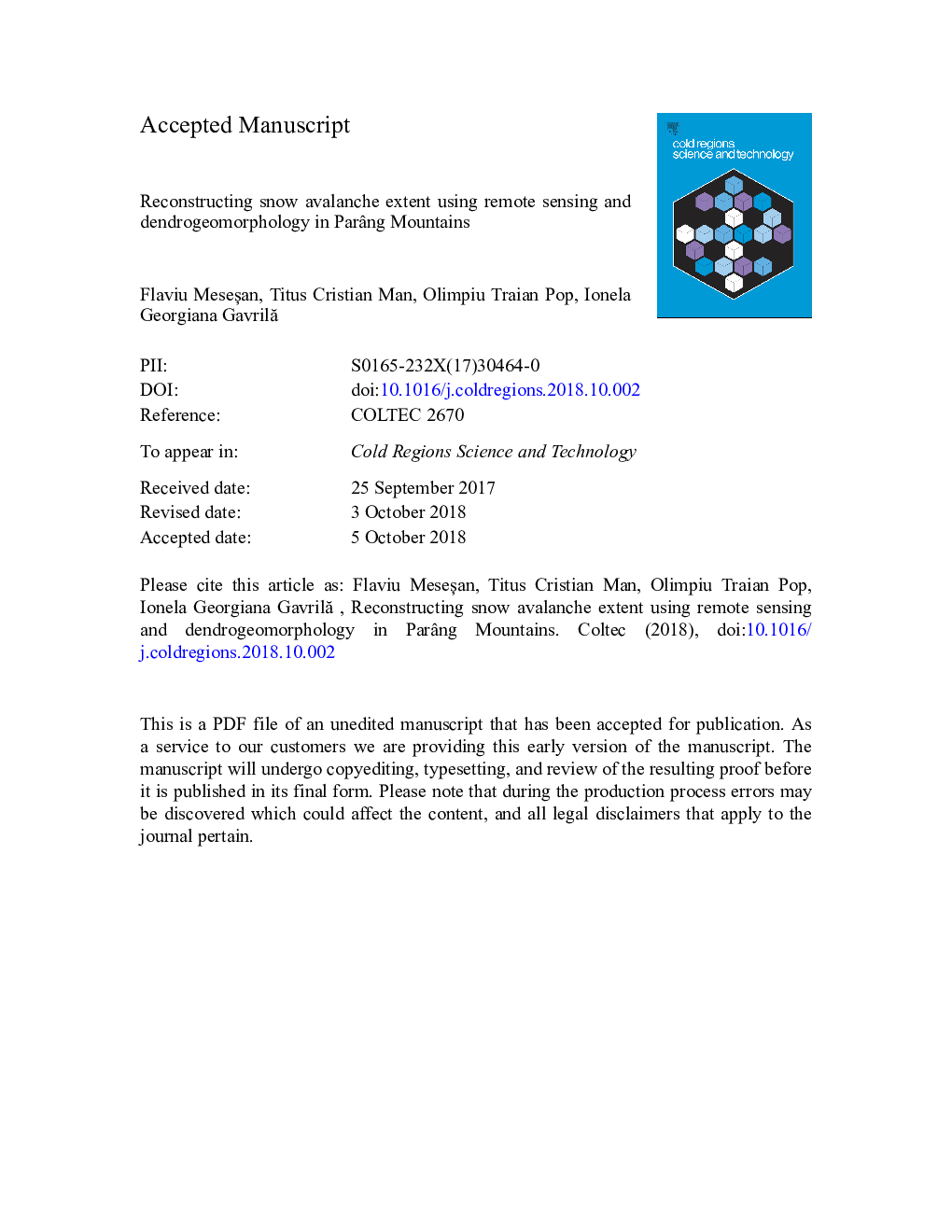| Article ID | Journal | Published Year | Pages | File Type |
|---|---|---|---|---|
| 11263178 | Cold Regions Science and Technology | 2019 | 75 Pages |
Abstract
Snow avalanches are some of the most important geomorphic processes that disturb the forests at treeline in the Romanian Carpathians. The occurrence of multiple snow avalanches in the same area leads to the development of the avalanche paths. In Parâng Mountains, the spatial extent and the frequency of past avalanche events are poorly documented. In this study we combined remote sensing approach and natural archives based on tree-rings to reconstruct the spatial extent of a past snow avalanche. Dendrogeomorphic reconstruction of past avalanche activity was performed in two avalanche paths based on the following growth anomalies: traumatic resin ducts, compression wood, callus tissue associated with scars and growth suppression. Remote sensing reconstruction was performed in nine avalanche paths including the above mentioned two and relies on the sudden variations of four spectral indices (Normalized Burn Ratio, Normalized Difference Moisture Index, Moisture Stress Index and Disturbance Index) between images acquired yearly from 1984 till 1988. The results of dendrogeomorphic reconstruction pinpoint a severe avalanche event occurred in 1985-1986 winter that affected both avalanche paths. The results of remote sensing reconstruction validate the dendrogeomorphic reconstruction and suggest four other avalanche paths affected by the same avalanche event. The combination of both methods provided a powerful approach to analyze the impact of a snow-avalanche event a regional scale. We consider both powerful methods to further asses the spatial extent of more avalanche events over the entire surface of Parâng Mountains.
Related Topics
Physical Sciences and Engineering
Earth and Planetary Sciences
Earth and Planetary Sciences (General)
Authors
Flaviu MeseÈan, Titus Cristian Man, Olimpiu Traian Pop, Ionela Georgiana GavrilÄ,
